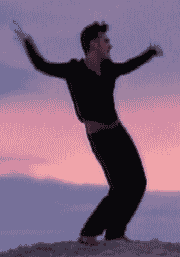|
|
Are we in an Art Market Bubble?, by Jamesy Wamesy on Oct 1, 2007 14:39:00 GMT 1, This was in The Telegraph, a bit more upbeat....
Art laughing all the way to the Banksy
By Godfrey Barker and Mark Choueke
Last Updated: 12:15am BST 01/10/2007
Soaring sale prices for works by the likes of Damien Hirst and Banksy have sparked a 55 per cent jump in the value of contemporary art in the past 12 months.
Chinese dealers get in the swim
Klimt’s Adele Bloch-Bauer of 1905 sold for $135m and Banksy’s Space Girl and Bird graffito went for £250,000
Pieces by living artists are appreciating at a radically faster rate than those by established past masters.
English watercolours have fallen out of fashion, dropping in value by almost one third. Portraits have lost almost 20 per cent of their value.
The figures, compiled in the latest Hiscox Art Market Research index, comes at the end of a year that has seen all manner of art sale records smashed.
One of Damien Hirst's trademark medicine cabinets sold for £9.65m at a Sotheby's auction in June, breaking the European record for a work by a living artist.
Banksy, the invisible graffiti artist, who paints London walls at night, broke through the £250,000 mark for the first time with the sale of Space Girl and Bird.
advertisement
Christies enjoyed its highest ever total for a week of art sales in June, when London art auctions raised a jaw-dropping £237m.
"Prices have risen in the last two years to levels even higher than the art boom in the late 1980s," said Robin Duthy, the art world's leading statistician, who compiled The Daily Telegraph's art index in the 1990s.
"Enormous sums, especially for contemporary art, have invaded this tiny market from investors disillusioned with the far slower returns on the Dow Jones and Nasdaq. They have pushed some artist prices to previously unimagined heights."
Duthy's rosy view is backed by the facts. The record price for art in 2004 – $104m for a Picasso at Sotheby's in New York – has been trounced four times in the past year.
Gustav Klimt's best portrait of Adele Bloch-Bauer, 1905, was sold last summer for $135m. Soon after, music and movie mogul David Geffen sold 1951 painting Woman V by Willem de Kooning for $137.5m. Then Las Vegas casino king Steve Wynn agreed to sell Picasso's 1932 Dream, to S I Newhouse, owner of Vogue in New York, for $139m.
That deal collapsed but the record price agreed still sent reverberations around the world of art collectors. Finally, Jackson Pollock's No 5, 1949, was sold for $140m in a deal arranged by Sotheby's.
Since then British painter Francis Bacon trebled in top value to $52.7m in New York last May, while portraitist Lucien Freud reportedly changed hands for more than $15m.
Damien Hirst's diamond–encrusted skull, For The Love Of God, was put up for sale in the White Cube Gallery in June with a $50m price tag. Since then he formed a consortium to buy it himself.
Collectors say the high prices paid for art in recent times have depended largely on a constant flow of cheap money. That theory suggests we might now see an end to new records being set with every passing month.
But Duthy rejects the idea that the whole art market depends on the world credit markets. "Contemporary art can be bought quite cheaply as well as at market-busting prices," he said. "Andy Warhol was cheap once, Hirst could be freely bought at under £10,000 in the early 1990s, as could Tracey Emin and Chris Ofili. All you have to do is spot where the genius is hiding now and buy it while it is still cheap."
Many art collectors believe the paintings, sculptures and art objects destined to rise fastest are now lurking in China, India or Russia – emergent economies with emergent cultures.
"The difference between the art market 20 years ago and the market now is that it is global," says Christie's chief executive Ed Dolman.
"Ever rising sums are coming out of China and Russia while India shows an interest in art investment hardly equalled elsewhere. And they are not just buying in their own markets, but across the board."
This was in The Telegraph, a bit more upbeat.... Art laughing all the way to the Banksy By Godfrey Barker and Mark Choueke Last Updated: 12:15am BST 01/10/2007 Soaring sale prices for works by the likes of Damien Hirst and Banksy have sparked a 55 per cent jump in the value of contemporary art in the past 12 months. Chinese dealers get in the swim Klimt’s Adele Bloch-Bauer of 1905 sold for $135m and Banksy’s Space Girl and Bird graffito went for £250,000
Pieces by living artists are appreciating at a radically faster rate than those by established past masters.
English watercolours have fallen out of fashion, dropping in value by almost one third. Portraits have lost almost 20 per cent of their value.
The figures, compiled in the latest Hiscox Art Market Research index, comes at the end of a year that has seen all manner of art sale records smashed.
One of Damien Hirst's trademark medicine cabinets sold for £9.65m at a Sotheby's auction in June, breaking the European record for a work by a living artist.
Banksy, the invisible graffiti artist, who paints London walls at night, broke through the £250,000 mark for the first time with the sale of Space Girl and Bird.
advertisement
Christies enjoyed its highest ever total for a week of art sales in June, when London art auctions raised a jaw-dropping £237m.
"Prices have risen in the last two years to levels even higher than the art boom in the late 1980s," said Robin Duthy, the art world's leading statistician, who compiled The Daily Telegraph's art index in the 1990s.
"Enormous sums, especially for contemporary art, have invaded this tiny market from investors disillusioned with the far slower returns on the Dow Jones and Nasdaq. They have pushed some artist prices to previously unimagined heights."
Duthy's rosy view is backed by the facts. The record price for art in 2004 – $104m for a Picasso at Sotheby's in New York – has been trounced four times in the past year.
Gustav Klimt's best portrait of Adele Bloch-Bauer, 1905, was sold last summer for $135m. Soon after, music and movie mogul David Geffen sold 1951 painting Woman V by Willem de Kooning for $137.5m. Then Las Vegas casino king Steve Wynn agreed to sell Picasso's 1932 Dream, to S I Newhouse, owner of Vogue in New York, for $139m.
That deal collapsed but the record price agreed still sent reverberations around the world of art collectors. Finally, Jackson Pollock's No 5, 1949, was sold for $140m in a deal arranged by Sotheby's.
Since then British painter Francis Bacon trebled in top value to $52.7m in New York last May, while portraitist Lucien Freud reportedly changed hands for more than $15m.
Damien Hirst's diamond–encrusted skull, For The Love Of God, was put up for sale in the White Cube Gallery in June with a $50m price tag. Since then he formed a consortium to buy it himself.
Collectors say the high prices paid for art in recent times have depended largely on a constant flow of cheap money. That theory suggests we might now see an end to new records being set with every passing month.
But Duthy rejects the idea that the whole art market depends on the world credit markets. "Contemporary art can be bought quite cheaply as well as at market-busting prices," he said. "Andy Warhol was cheap once, Hirst could be freely bought at under £10,000 in the early 1990s, as could Tracey Emin and Chris Ofili. All you have to do is spot where the genius is hiding now and buy it while it is still cheap."
Many art collectors believe the paintings, sculptures and art objects destined to rise fastest are now lurking in China, India or Russia – emergent economies with emergent cultures.
"The difference between the art market 20 years ago and the market now is that it is global," says Christie's chief executive Ed Dolman.
"Ever rising sums are coming out of China and Russia while India shows an interest in art investment hardly equalled elsewhere. And they are not just buying in their own markets, but across the board." |
|
hanky
New Member

🗨️ 663
👍🏻 0
December 2007
|
Are we in an Art Market Bubble?, by hanky on Feb 25, 2008 11:43:01 GMT 1, Are we entering an Art print bubble? 
In the 17th century we had the “Tulip bubble”, when demand for tulip bulbs reached such a peak that enormous prices were charged for a single bulb. Some speculators made large profits as a result, others lost all or even more than they had. This was followed in the 18th century by the "South Sea Bubble", an economic bubble that occurred through overheated speculation in the company shares for the South Sea Company. In the 1980’s we had the “Japanese asset price bubble” a time of skyrocketing land and stock prices in the Japanese economy, lasting from 1986 to 1990, followed by a stupendous crash caused by speculation in the yen. More recently in 1990’s we had the "dot-com bubble" a speculative bubble roughly 1995–2001 during which stock markets in Western nations saw their value increase rapidly from growth in the new internet sector and related fields. Rapidly increasing stock prices, individual speculation in stocks, and widely available venture capital created an exuberant environment in which many of these businesses dismissed standard business models, focusing on increasing market share at the expense of the bottom line. Also in the 1980’s the “sports card bubble”, caused by sports cards being produced in higher numbers, and collectors started to keep their cards in better condition as they became increasingly aware of their potential investment value and unfortunately the proliferation of cards saturated the market. Similarities?
Inflated prices with many existing people (flippers) rushing to buy any artwork they speculate may increase exponentially in value driving prices up further, existing collectors buying in the primary(sometimes hastily due to the competition), new cash investors entering the secondary market buying anything that is ‘established’ and driving prices up further (Obama print $50 going for $3,000!!). Many new galleries and artists starting to take advantage of the situation and entering the market with new prints and originals. Established artists and galleries producing more and more prints into the market to capitalise on the current situation creating saturation?. Is history about to repeat itself? Comments please   
Are we entering an Art print bubble?  In the 17th century we had the “Tulip bubble”, when demand for tulip bulbs reached such a peak that enormous prices were charged for a single bulb. Some speculators made large profits as a result, others lost all or even more than they had. This was followed in the 18th century by the "South Sea Bubble", an economic bubble that occurred through overheated speculation in the company shares for the South Sea Company. In the 1980’s we had the “Japanese asset price bubble” a time of skyrocketing land and stock prices in the Japanese economy, lasting from 1986 to 1990, followed by a stupendous crash caused by speculation in the yen. More recently in 1990’s we had the "dot-com bubble" a speculative bubble roughly 1995–2001 during which stock markets in Western nations saw their value increase rapidly from growth in the new internet sector and related fields. Rapidly increasing stock prices, individual speculation in stocks, and widely available venture capital created an exuberant environment in which many of these businesses dismissed standard business models, focusing on increasing market share at the expense of the bottom line. Also in the 1980’s the “sports card bubble”, caused by sports cards being produced in higher numbers, and collectors started to keep their cards in better condition as they became increasingly aware of their potential investment value and unfortunately the proliferation of cards saturated the market. Similarities? Inflated prices with many existing people (flippers) rushing to buy any artwork they speculate may increase exponentially in value driving prices up further, existing collectors buying in the primary(sometimes hastily due to the competition), new cash investors entering the secondary market buying anything that is ‘established’ and driving prices up further (Obama print $50 going for $3,000!!). Many new galleries and artists starting to take advantage of the situation and entering the market with new prints and originals. Established artists and galleries producing more and more prints into the market to capitalise on the current situation creating saturation?. Is history about to repeat itself? Comments please    |
|
jfury
Junior Member

🗨️ 1,084
👍🏻 45
May 2007
|
Are we in an Art Market Bubble?, by jfury on Feb 25, 2008 11:46:07 GMT 1, I think someone started a similar thread previously discussing the Tulip scenario - will try to find
I think someone started a similar thread previously discussing the Tulip scenario - will try to find
|
|
|
|
Are we in an Art Market Bubble?, by freedrugs on Feb 25, 2008 11:46:29 GMT 1, Are you having a bubble
Are you having a bubble
|
|
|
|
Are we in an Art Market Bubble?, by manchestermike on Feb 25, 2008 11:52:03 GMT 1, Jesus
Do we have to have this same discussion every two weeks?
Jesus
Do we have to have this same discussion every two weeks?
|
|
lastpost
Junior Member

🗨️ 1,960
👍🏻 2
April 2007
|
Are we in an Art Market Bubble?, by lastpost on Feb 25, 2008 11:52:49 GMT 1, Jesus Do we have to have this same discussion every two weeks?
Has it been that long? 
Jesus Do we have to have this same discussion every two weeks? Has it been that long?  |
|
|
|
jfury
Junior Member

🗨️ 1,084
👍🏻 45
May 2007
|
|
|
hanky
New Member

🗨️ 663
👍🏻 0
December 2007
|
Are we in an Art Market Bubble?, by hanky on Feb 25, 2008 12:19:27 GMT 1, I know we have discussed before and I'm sure this will nave no effect on the economy as a whole as at the moment it is confined to a particular niche area and like pyramid selling those at the beginning will always be less affected than the later joiners. Still interested to see if prints (I exclude any originals here) can sustain the prices for what is a signed copy and in some cases an unsigned copy of an original.
I know we have discussed before and I'm sure this will nave no effect on the economy as a whole as at the moment it is confined to a particular niche area and like pyramid selling those at the beginning will always be less affected than the later joiners. Still interested to see if prints (I exclude any originals here) can sustain the prices for what is a signed copy and in some cases an unsigned copy of an original.
|
|
BONGO
Junior Member

🗨️ 1,004
👍🏻 11
February 2007
|
Are we in an Art Market Bubble?, by BONGO on Feb 25, 2008 12:45:40 GMT 1, BONGI STUCK RECORD PART 67:
VALUE / BUBBLE IS ONLY AN ISSUE IF YOU ALLOW FISCAL WORTH TO WEIGH ON YOUR MIND
VERY FEW PURCHASES APPRECIATE WITH AGE
ENJOY THE IMAGE BUT DO NOT BUY TO IMPRESS OTHERS / PAY ONLY WHAT YOU CAN AFFORD AT THAT TIME/ WRITE OFF COST MENTALLY AS SOON AS YOU HAVE BOUGHT IT / PRINT OFF HI RES COPY FOR DISPLAY IF YOU LIKE THE IMAGE BUT DO NOT HAVE ACCESS TO FUNDS TO BUY ORIGINAL
BONGI STUCK RECORD PART 67:
VALUE / BUBBLE IS ONLY AN ISSUE IF YOU ALLOW FISCAL WORTH TO WEIGH ON YOUR MIND
VERY FEW PURCHASES APPRECIATE WITH AGE
ENJOY THE IMAGE BUT DO NOT BUY TO IMPRESS OTHERS / PAY ONLY WHAT YOU CAN AFFORD AT THAT TIME/ WRITE OFF COST MENTALLY AS SOON AS YOU HAVE BOUGHT IT / PRINT OFF HI RES COPY FOR DISPLAY IF YOU LIKE THE IMAGE BUT DO NOT HAVE ACCESS TO FUNDS TO BUY ORIGINAL
|
|
|
|
Are we in an Art Market Bubble?, by Avian Security on Feb 25, 2008 13:46:45 GMT 1, banksyforum.proboards82.com/index.cgi?action=display&board=general&thread=1190239229&page=1
I started an identical thread. How strange. However mine was concerned with Micallef, who decided to flood the market with massively overpriced prints, which created ugly scenes of greed and carnage outside Laz's gallery.
Here we have a limited number of desirable items and an ever increasing number of people who want them. So it's not like the tulip bubble, no.
Bongo is kind of right but he is a capslock-loving idealist. Most people do try to buy what they like, but it is difficult to remove the taint and allure of monetary gain from your decision making.
banksyforum.proboards82.com/index.cgi?action=display&board=general&thread=1190239229&page=1I started an identical thread. How strange. However mine was concerned with Micallef, who decided to flood the market with massively overpriced prints, which created ugly scenes of greed and carnage outside Laz's gallery. Here we have a limited number of desirable items and an ever increasing number of people who want them. So it's not like the tulip bubble, no. Bongo is kind of right but he is a capslock-loving idealist. Most people do try to buy what they like, but it is difficult to remove the taint and allure of monetary gain from your decision making.
|
|
|
|
hanky
New Member

🗨️ 663
👍🏻 0
December 2007
|
Are we in an Art Market Bubble?, by hanky on Feb 25, 2008 15:20:06 GMT 1, However a rather harsher outcome than either the Chairman of Enron or Northern Rock got!
"A Chinese company chairman has been sentenced to death for running a scam involving giant ants"
However a rather harsher outcome than either the Chairman of Enron or Northern Rock got!
"A Chinese company chairman has been sentenced to death for running a scam involving giant ants"
|
|
|
|
Are we in an Art Market Bubble?, by alvington89 on Feb 25, 2008 15:28:34 GMT 1, A comedy award would be more appropriate than the death sentance don't you think?
A comedy award would be more appropriate than the death sentance don't you think?
|
|
BONGO
Junior Member

🗨️ 1,004
👍🏻 11
February 2007
|
Are we in an Art Market Bubble?, by BONGO on Feb 25, 2008 15:50:20 GMT 1, PYRAMID SCHEMES ARE USUALLY LINKED WITH GREED AND DESPERATION - BONGO IS AWARE OF IT IN BOTH ROMANIA AND ALBANIA
PYRAMID SCHEMES ARE USUALLY LINKED WITH GREED AND DESPERATION - BONGO IS AWARE OF IT IN BOTH ROMANIA AND ALBANIA
|
|
|
|
|
|
Are we in an Art Market Bubble?, by dave313perry on Feb 25, 2008 15:59:17 GMT 1, PYRAMID SCHEMES ARE USUALLY LINKED WITH GREED AND DESPERATION - BONGO IS AWARE OF IT IN BOTH ROMANIA AND ALBANIA
Iv given up on educating myself and reading the news i just scan through bongo posts!!!
PYRAMID SCHEMES ARE USUALLY LINKED WITH GREED AND DESPERATION - BONGO IS AWARE OF IT IN BOTH ROMANIA AND ALBANIA Iv given up on educating myself and reading the news i just scan through bongo posts!!! |
|
|
|
Are we in an Art Market Bubble?, by manty on Feb 25, 2008 16:48:33 GMT 1, My comment is its all a little too complicated for me.
I just like the Pretty pictures on my wall
My comment is its all a little too complicated for me.
I just like the Pretty pictures on my wall
|
|
|
|
Are we in an Art Market Bubble?, by Heavyconsumer on Feb 25, 2008 16:55:26 GMT 1, While Bongo certainly makes a great deal of sense, there are surely others who - rightly or wrongly - do take into account the investment appeal of a piece of art before purchase, whether it be an original or a print. This is bound, on some level, to create situations where buyers' tastes are affected, if not driven to an extent, by their desire for profits. It's a lot easier of course to seperate the two motivations when you have plenty of money already - I wish!
While Bongo certainly makes a great deal of sense, there are surely others who - rightly or wrongly - do take into account the investment appeal of a piece of art before purchase, whether it be an original or a print. This is bound, on some level, to create situations where buyers' tastes are affected, if not driven to an extent, by their desire for profits. It's a lot easier of course to seperate the two motivations when you have plenty of money already - I wish!
|
|
BONGO
Junior Member

🗨️ 1,004
👍🏻 11
February 2007
|
Are we in an Art Market Bubble?, by BONGO on Feb 25, 2008 17:03:21 GMT 1, While Bongo certainly makes a great deal of sense, there are surely others who - rightly or wrongly - do take into account the investment appeal of a piece of art before purchase, whether it be an original or a print. This is bound, on some level, to create situations where buyers' tastes are affected, if not driven to an extent, by their desire for profits. It's a lot easier of course to seperate the two motivations when you have plenty of money already - I wish!
BONGO AGREE
PART OF THE PROBLEM IS THAT ART IS NOT VIEWED AS JUST DECORATION NOW BY CONSUMERS- IT IS VIEWED AS AN INVESTMENT - YET THERE IS NO REASON WHY THIS SHOULD BE, APART FROM THE FACT THAT IS DOES NOT / SHOULD NOT DEGRADE WITH TIME AND USE LIKE MOST OTHER PURCHASES.
ITS IS HARD TO PUT A VALUE ON PLEASURE AS IT ISNT A TANGIBLE, ITS ISNT MEASUREABLE.
.
While Bongo certainly makes a great deal of sense, there are surely others who - rightly or wrongly - do take into account the investment appeal of a piece of art before purchase, whether it be an original or a print. This is bound, on some level, to create situations where buyers' tastes are affected, if not driven to an extent, by their desire for profits. It's a lot easier of course to seperate the two motivations when you have plenty of money already - I wish! BONGO AGREE PART OF THE PROBLEM IS THAT ART IS NOT VIEWED AS JUST DECORATION NOW BY CONSUMERS- IT IS VIEWED AS AN INVESTMENT - YET THERE IS NO REASON WHY THIS SHOULD BE, APART FROM THE FACT THAT IS DOES NOT / SHOULD NOT DEGRADE WITH TIME AND USE LIKE MOST OTHER PURCHASES. ITS IS HARD TO PUT A VALUE ON PLEASURE AS IT ISNT A TANGIBLE, ITS ISNT MEASUREABLE. . |
|
|
|
hanky
New Member

🗨️ 663
👍🏻 0
December 2007
|
Are we in an Art Market Bubble?, by hanky on Feb 25, 2008 22:07:51 GMT 1, and they don't come much madder than the crowd here!
and they don't come much madder than the crowd here!
|
|
|
|
Are we in an Art Market Bubble?, by James Smith 77 on Mar 7, 2008 20:21:16 GMT 1,
"Art Report Says 60% of February Sale Lots Missed Estimate
Well... there's been some record art sales going on in London the last few days... and while to the total sales dollars might be bigger then ever.. prices are really starting to show some real scary weakness. Could this huge art party really be over??
Here's a story today by Scott Reyburn from bloomberg news... (photo added by MAO.. photo created by Jill Greenberg, "Deniability, 2005" )
U.K Art Report Says 60% of February Sale Lots Missed Estimate
2008-03-06 01:05 (New York) By Scott Reyburn
March 6 (Bloomberg) -- About 60 percent of lots in a record series of contemporary-art auctions in London failed to achieve expected prices, according to research company ArtTactic.
The evening sales at Christie's International, Sotheby's and Phillips de Pury & Co. raised 189.8 million pounds ($378.4
million) in February, the most for a series of contemporary sales in the British capital.
According to London-based ArtTactic's March ``Rawfacts''
bulletin, published today, most items sold for bids (or were left
unsold) below or at the lower end of their catalog estimates, indicating that sellers and auction houses' expectations were not being met. These bid prices did not include auction-house fees, ArtTactic said.
ArtTactic's Managing Director Anders Petterson said that 73 percent of works at Christie's Feb. 6 evening auction failed to achieve mid-estimate prices. The equivalent contemporary-art sales at Sotheby's and Phillips de Pury on Feb. 27 and Feb. 28 saw 61 percent and 53 percent of lots, respectively, unable to attract mid-estimate bidding.
``The auction houses are continually raising the stakes at the top end of the market,'' said Petterson. ``But this masks how demand is slowing in the middle. Auction valuations of contemporary art are now out of synch with demand.''
Petterson, a former JPMorgan Chase & Co. bond trader who founded ArtTactic in 2001, said a majority of the lots at Sotheby's, Christie's and Phillips de Pury's evening auctions of contemporary art in London and New York has been failing to achieve mid-estimate prices since October 2007.
Bacon Sales
ArtTactic said 10 lots accounted for 70 percent of the total of sales at both Christie's and Sotheby's, where Francis Bacon paintings sold for 26.3 million pounds and 20 million pounds, respectively.
Sotheby's total of 95 million pounds with fees was a record for any contemporary-art sale held in Europe, the auction house said.
In total, including the 4.4 million pounds with fees achieved at Phillips's Feb. 29 day sale, Sotheby's, Christie's and Phillips de Pury took 250.1 million pounds with fees for their February auctions of contemporary art. This was a record for a London series of sales, representing a 59 percent increase on February 2007.
``There's a huge difference in price between the best and the very good,'' said Cheyenne Westphal, chairman of contemporary art, in an interview after Sotheby's sale.
Westphal said there are 26 other versions of the 1983 Gerhard Richter ``Kerze (Candle)'' painting that sold for a quadruple-estimate 8 million pounds, setting a record for the artist, according to the auction result tracker, Artnet.
``The problem for the auction houses is that they have to find these masterpieces for every sale,'' said Petterson. ``From what we're hearing from dealers, things are slower. From now on, every auction is going to be a test of the market.''
(Scott Reyburn writes about the art market for Bloomberg News. Any opinions expressed are his own.)"
"Art Report Says 60% of February Sale Lots Missed Estimate
Well... there's been some record art sales going on in London the last few days... and while to the total sales dollars might be bigger then ever.. prices are really starting to show some real scary weakness. Could this huge art party really be over??
Here's a story today by Scott Reyburn from bloomberg news... (photo added by MAO.. photo created by Jill Greenberg, "Deniability, 2005" )
U.K Art Report Says 60% of February Sale Lots Missed Estimate
2008-03-06 01:05 (New York) By Scott Reyburn
March 6 (Bloomberg) -- About 60 percent of lots in a record series of contemporary-art auctions in London failed to achieve expected prices, according to research company ArtTactic.
The evening sales at Christie's International, Sotheby's and Phillips de Pury & Co. raised 189.8 million pounds ($378.4
million) in February, the most for a series of contemporary sales in the British capital.
According to London-based ArtTactic's March ``Rawfacts''
bulletin, published today, most items sold for bids (or were left
unsold) below or at the lower end of their catalog estimates, indicating that sellers and auction houses' expectations were not being met. These bid prices did not include auction-house fees, ArtTactic said.
ArtTactic's Managing Director Anders Petterson said that 73 percent of works at Christie's Feb. 6 evening auction failed to achieve mid-estimate prices. The equivalent contemporary-art sales at Sotheby's and Phillips de Pury on Feb. 27 and Feb. 28 saw 61 percent and 53 percent of lots, respectively, unable to attract mid-estimate bidding.
``The auction houses are continually raising the stakes at the top end of the market,'' said Petterson. ``But this masks how demand is slowing in the middle. Auction valuations of contemporary art are now out of synch with demand.''
Petterson, a former JPMorgan Chase & Co. bond trader who founded ArtTactic in 2001, said a majority of the lots at Sotheby's, Christie's and Phillips de Pury's evening auctions of contemporary art in London and New York has been failing to achieve mid-estimate prices since October 2007.
Bacon Sales
ArtTactic said 10 lots accounted for 70 percent of the total of sales at both Christie's and Sotheby's, where Francis Bacon paintings sold for 26.3 million pounds and 20 million pounds, respectively.
Sotheby's total of 95 million pounds with fees was a record for any contemporary-art sale held in Europe, the auction house said.
In total, including the 4.4 million pounds with fees achieved at Phillips's Feb. 29 day sale, Sotheby's, Christie's and Phillips de Pury took 250.1 million pounds with fees for their February auctions of contemporary art. This was a record for a London series of sales, representing a 59 percent increase on February 2007.
``There's a huge difference in price between the best and the very good,'' said Cheyenne Westphal, chairman of contemporary art, in an interview after Sotheby's sale.
Westphal said there are 26 other versions of the 1983 Gerhard Richter ``Kerze (Candle)'' painting that sold for a quadruple-estimate 8 million pounds, setting a record for the artist, according to the auction result tracker, Artnet.
``The problem for the auction houses is that they have to find these masterpieces for every sale,'' said Petterson. ``From what we're hearing from dealers, things are slower. From now on, every auction is going to be a test of the market.''
(Scott Reyburn writes about the art market for Bloomberg News. Any opinions expressed are his own.)"
|
|
beyond
New Member

🗨️ 131
👍🏻 1
December 2006
|
Are we in an Art Market Bubble?, by beyond on Mar 7, 2008 20:28:59 GMT 1, yawn
yawn
|
|
|
|
Winter
Junior Member
  
🗨️ 7,155
👍🏻 4,461
March 2007
|
Are we in an Art Market Bubble?, by Winter on Mar 7, 2008 20:32:31 GMT 1, I was going to respond but I can't actually be bothered
I was going to respond but I can't actually be bothered
|
|
romanywg
Junior Member
 
🗨️ 4,093
👍🏻 36
October 2006
|
Are we in an Art Market Bubble?, by romanywg on Mar 7, 2008 20:42:05 GMT 1, Zzzzzzzzzzzzzzzzzzzzzzzzzzzzzzzzzzzz.
Zzzzzzzzzzzzzzzzzzzzzzzzzzzzzzzzzzzz.
|
|
idris
New Member

🗨️ 564
👍🏻 0
February 2008
|
Are we in an Art Market Bubble?, by idris on Mar 7, 2008 20:46:26 GMT 1, Ques?
Ques?
|
|
|
|
Are we in an Art Market Bubble?, by alsbabar on Mar 7, 2008 20:49:46 GMT 1, james - interesting, i think you are finding that this report refers to contemporary art, however this trend isnt true of the urban art market, which is seeing huge growth. So yes there is an art purchase decline, but thats only with established galleries and auction houses, as buyers are now finding different routes to purchasing art. Such as the new breed of urban art galleries and ebay
james - interesting, i think you are finding that this report refers to contemporary art, however this trend isnt true of the urban art market, which is seeing huge growth. So yes there is an art purchase decline, but thats only with established galleries and auction houses, as buyers are now finding different routes to purchasing art. Such as the new breed of urban art galleries and ebay
|
|
|
|
Are we in an Art Market Bubble?, by veralynn on Mar 7, 2008 20:51:32 GMT 1, Is it Monday yet?
Is it Monday yet?
|
|
G-Man
Junior Member
 
🗨️ 3,529
👍🏻 33
November 2007
|
Are we in an Art Market Bubble?, by G-Man on Mar 7, 2008 20:55:07 GMT 1, Yawn
Urban art is not a follower of the art scene surely? ?? ??
Yawn Urban art is not a follower of the art scene surely?  ?? |
|
|
|
Are we in an Art Market Bubble?, by alsbabar on Mar 7, 2008 20:56:38 GMT 1, if it bores you, dont read it - move to another thread. I pay attention to these types of reports, because I collect art, not just urban art either
if it bores you, dont read it - move to another thread. I pay attention to these types of reports, because I collect art, not just urban art either
|
|
|
|
Are we in an Art Market Bubble?, by barry cilit on Mar 7, 2008 21:10:13 GMT 1, tried to read it, but it just made my eyes hurt.
My theory of the art market is like a sausage on a BBQ.
When the sausage is fresh - all eyes on sausage.
When the sausage is ready - everybody wants the sausage.
If sausage falls on floor but not yet cooked - no body wants the sausage.
If sausage falls on floor but is cooked well - there will still be a limited demand for the sausage in question.
If sausage is burnt - it hangs around for a while but will eventually end up somewhere.
If sausage is cooked with bacon wrapped round it - i.e 2 artist collaboration, very popular.
tried to read it, but it just made my eyes hurt.
My theory of the art market is like a sausage on a BBQ.
When the sausage is fresh - all eyes on sausage.
When the sausage is ready - everybody wants the sausage.
If sausage falls on floor but not yet cooked - no body wants the sausage.
If sausage falls on floor but is cooked well - there will still be a limited demand for the sausage in question.
If sausage is burnt - it hangs around for a while but will eventually end up somewhere.
If sausage is cooked with bacon wrapped round it - i.e 2 artist collaboration, very popular.
|
|















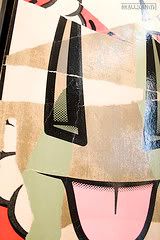


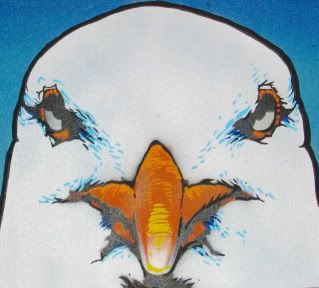
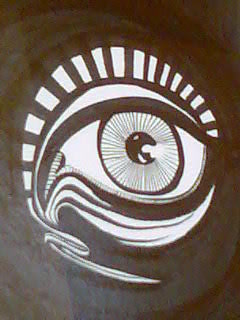

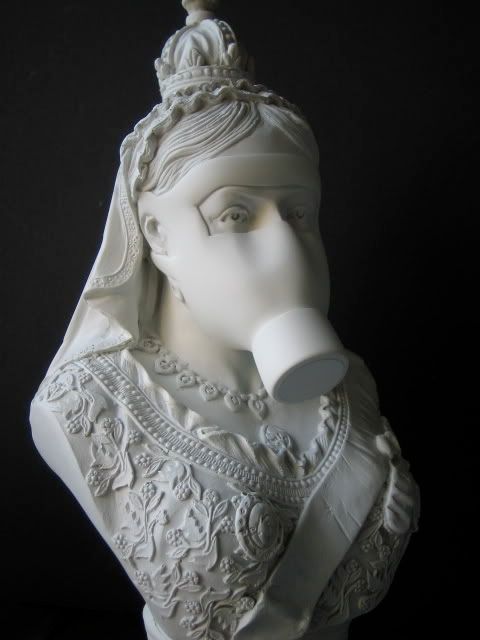

 ??
??